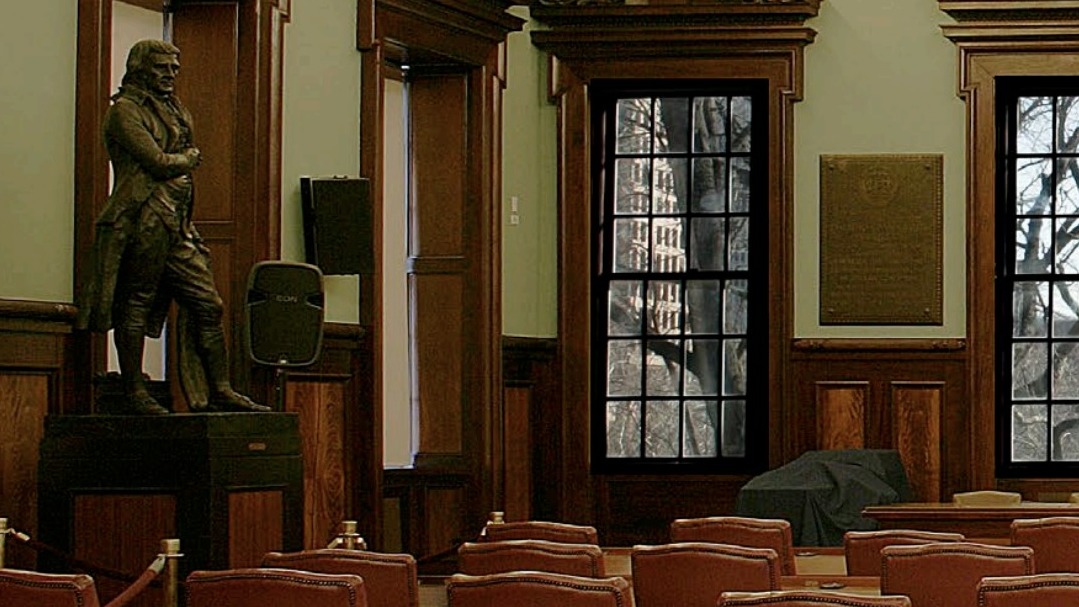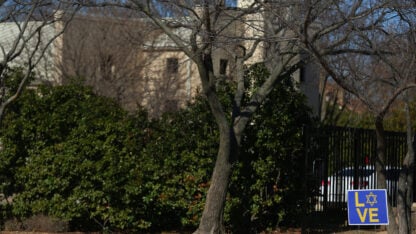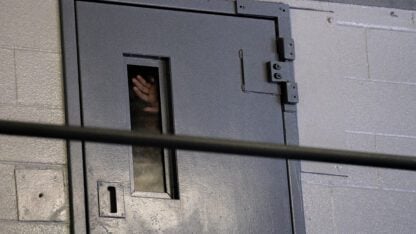New York City will exile Thomas Jefferson’s statue from a prominent spot in city hall

New York Public Design Commission
A Thomas Jefferson statue is on its way out of New York’s City Council Chamber, after members of the Public Design Commission agreed to take the nation’s third president and well-known slaveowner off of his pedestal.
The statue currently occupies a prominent spot near the chamber’s main dais, where Jefferson has towered over council members for more than 100 years.
Jefferson’s statue should not be in “a position of honor and recognition and tribute” in the chamber, council member Inez Barron said during a public meeting on Monday about the statue’s future, adding that Jefferson “felt that Blacks were inferior to whites — in his own words.”
It’s not clear where the statue will ultimately end up
A final spot for the statue is yet to be determined. It was first placed in City Hall around 1834 and was displayed in several locations there before moving to the main chamber in 1915.
The statue was commissioned because of Jefferson’s support for religious freedom in the U.S. military; it was paid for by Navy officer Uriah Phillips Levy, a New Yorker who was one of the first Jewish officers in the service. It’s a plaster version of the bronze statue that stands in the Capitol Rotunda in Washington, D.C., which Levy also gifted to the U.S. government.
The statue features Jefferson holding a quill pen and the Declaration of Independence. But Barron and other speakers cited Jefferson’s embrace of slavery as a reason to kick his statue out of the chamber where lawmakers govern one of the country’s most diverse cities.
Barron also noted the atrocities and extortion of slavery, as well as Jefferson’s initiative to push Native Americans off their ancestral lands.
“We’re not being revisionist. We’re not waging a war on history,” Barron said. “We’re saying that we want to make sure that the total story is told, that there are no half-truths and that we are not perpetrating lies.”
The removal kicked off a debate about history and public art
The issued touched off a prolonged debate, as members discussed whether a work of public art should be hidden away from view, or if removing the statue might also remove context around one of the country’s founding fathers.
The commission’s initial proposal called for loaning the statue to the New York Historical Society, which planned to display it along with historic information to put his life in context. But opponents of that idea noted that the society is a private entity, without direct public accountability and access.
During debate, two main competing options emerged: to move Jefferson’s statue to a less prominent spot in City Hall, or to send it to the historical society.
“It could easily be moved to the Governor’s Room [in City Hall], which is filled with people associated with slavery,” said public art advocate Todd Fine, who is president of the Washington Street Advocacy Group.
Fine said he was “bewildered” that the commission didn’t originally include the option as an alternative.
Council member Adrienne Adams disagreed with that idea, saying that moving the statue within City Hall would amount to an attempt to “placate” people who want it removed. But she also acknowledged that there wasn’t a consensus on Jefferson’s final destination.
“The bottom line is that there is no educational purpose for the statue to be in City Hall chambers,” Adams said.
A final decision could come by the end of the year
In the end, a final decision on the statue’s fate was deemed to be out of reach, at least for now. The commission voted to approve removing the statue, pledging to decide by the end of 2021 to find “a location where it remains in the public realm.”
The push to remove the statue began at least 20 years ago, in an effort that was led by Inez Barron’s husband, state Assembly Member Charles Barron.
Despite the long-running effort to take the statue down, Jefferson’s likeness was placed in an even more prominent spot around 2011, when its pedestal was raised higher to protect the recently reconditioned artwork.
9(MDAxODM0MDY4MDEyMTY4NDA3MzI3YjkzMw004))







